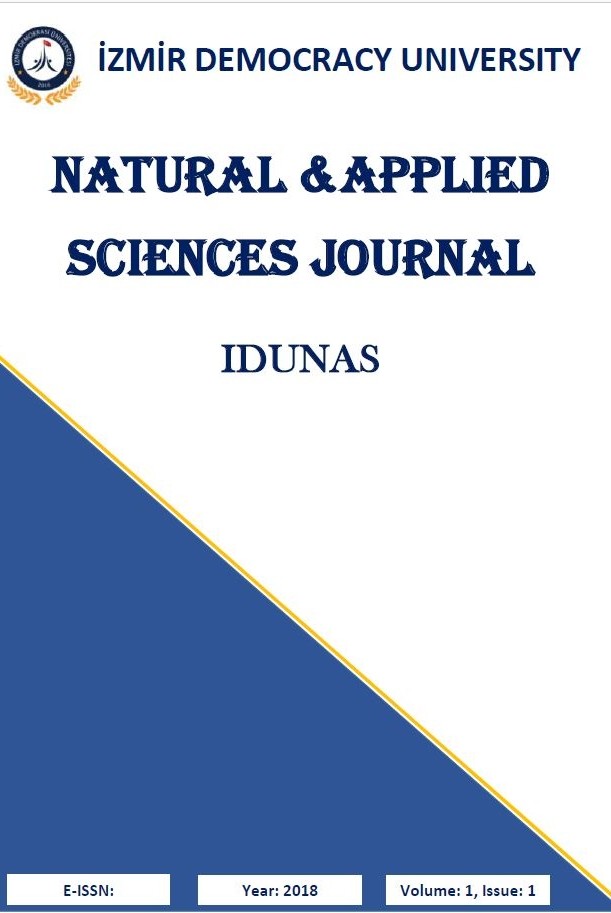Sabit Manyetik Alanların Programlanabilir Şantlar Üzerine Etkisi
Manyetik alan prensibi ile ayarlanan programlanabilir valflerin, çok yüksek manyetik alan bulunan ortamlarda istenmeden ve çoğu zaman da farkına varılmadan basınç ayarlarında değişiklik olabilmektedir. Son yıllarda yapılan araştırmalarda, günlük hayatımızda kullanılan cihazların çeşitliliğindeki artışa paralel olarak pek çok farklı cihazın bu etkiyi yaptıkları rapor edilmiştir. Bu çalışmada, akıllı cep telefonu, kulaklık gibi iyonize olmayan manyetik alan üreten cihazların programlanabilir serebral şantlar üzerine etkisi incelenmiştir. Çalışmada, günümüzde sıklıkla tercih edilen valflerden olan Codman Certas programlanabilir valfi kullanılmıştır. Öncelikle bu valfi harici olarak etkileyen minimum manyetik akı yoğunlukları tespit edilmiş, daha sonra iki farklı kulaklık ve bir cep telefonu tarafından üretilen manyetik akı yoğunluklarının bu valf üzerine etkisi gözlemlenmiştir. Bu tip harici manyetik alanların valflerle yakın temaslarında istenmeyen basınç değişikliklerine sebep olabildiği, hastaların bu konuda bilinçlendirilmesi gerektiği ortaya koyulmuştur.
Anahtar Kelimeler:
Hidrosefali, Programlanabilir Şant
The Effect of Constant Magnetic Fields on Programmable Shunts
The valve pressure settings of the programmable shunt valves may be changed undesirably in the high magnetic field environments, and in many cases, these changes are not noticeable. Recent studies have shown that this effect increases in parallel with the increasing diversity of permanent magnet containing devices used in daily life. In this study, the effects of the non-ionizing magnetic field produced by devices such as smartphones and headphones on the programmable cerebral shunts were investigated. Codman Certas programmable valves, frequently preferred in the treatment of hydrocephalus, were used in this study. First, the minimum magnetic flux densities that could affect these valves when exposed to an external magnetic field have been determined. Then, the effect of the magnetic flux densities produced by two different earphones and a mobile phone on this valve was investigated. It has been observed that such external magnetic fields can cause undesirable pressure changes on the valves at close distances, and these results suggest that patients should be aware of this effect.
Keywords:
Hydrocephalus, Programmable Shunts,
___
- Anderson, R., Walker, M., Viner, J., & Kestle, J. (2004). Adjustment and malfunction of a programmable valve after exposure to toy magnets: case report. Journal of Neurosurgery, 101(2), 222-225.
- Aschoff, A., Kremer, P., Hashemi, B., & Kunze, S. (1999). The scientific history of hydrocephalus and its treatment. Neurosurgical Review, 22(2-3), 67-93.
- Guilfoyle, M., Fernandes, H., & Price, S. (2007). In vivo alteration of Strata valve setting by vagus nerve stimulator-activating magnet. British Journal of Neurosurgery, 21(1), 41-42.
- Inoue, T., Kuzu, Y., Ogasawara, K., & Ogawa, A. (2005). Effect of 3-tesla magnetic resonance imaging on various pressure programmable shunt valves. Journal of Neurosurgery: Pediatrics, 163-165.
- Nomura, S., Fujisava, H., & Suzuki, M. (2005). Effect of cell phone magnetic fields on adjustable cerebrospinal fluid shunt valves. Surgical Neurology, 63(5), 467-468.
- Öztürk, S., Cakin, H., Kurtuldu, H., Koçak, O., Erol, F., & Kaplan, M. (2017). Smartphones and Programmable Shunts: Are These Indispensable Phones Safe and Smart? World Neurosurgery, 112, 518-525.
- Shellock, F., Wilson, S., & Mauge, C. (2007). Magnetically programmable shunt valve: MRI at 3-Tesla. Magnetic Resonance Imaging(25), 1116-1121.
- Utsuki, S., Shimizu, S., Oka, H., Suzuki, S., & Fujii, K. (2006). Alteration of the pressure setting of a Codman-Hakim programmable valve by a television. Neurologia medico-chirurgica, 46(8), 405-407.
- ISSN: 2645-9000
- Başlangıç: 2018
- Yayıncı: İzmir Demokrasi Üniversitesi
Sayıdaki Diğer Makaleler
Bioremediation of wastewaters from local textile industries
Hiperspektral Görüntüleme ile Kırmızı Kan Hücresi Analizi
Hüseyin KURTULDU, Aynur Didem OKTAN, Hatice CANDAN, Beste Sahra CİHANGİROĞLU
Sabit Manyetik Alanların Programlanabilir Şantlar Üzerine Etkisi
Hüseyin KURTULDU, Büşra ÖZGEDE
Comparison Of Physical And Physiological Parameters Of Children Skier And Volleyball Players
